Our four-day stay in St. Petersburg was marked by stormy weather, dissatisfaction with our living conditions, and very late nights with a local friend who swears he doesn’t have an alcohol problem 😉
Therefore, the conditions weren’t exactly ideal for action-packed sightseeing around the city; instead, we mostly spent our time meandering along the city’s distinctive avenues and riverbanks, immersing ourselves in the unique atmosphere of Russia’s second city and former capital.
This post draws inspiration from those rain-soaked walks along the Neva River during the summertime “white nights” – one of the things the city is best known for. Indeed, as my rather nocturnal friend showed us over the course of our visit, the lines between day and night are very much blurred in St. Petersburg, with plenty to occupy your attention no matter the hour.
Day: The History
As the city’s name might suggest, St. Petersburg’s history revolves around Peter the Great, the Russian tsar who established the Russian Empire in 1721. The city’s historical attractions are therefore inextricably linked to the life and times of Peter the Great, and you’ll find a little bit of him no matter where you go.
The city’s number one attraction is no doubt the Winter Palace, home to the State Hermitage Museum, the second-largest art museum in the world after the Louvre. This place is veritably gigantic, and truth be told, there’s very little hope of seeing all of its collections in a lifetime, let alone a day or two.
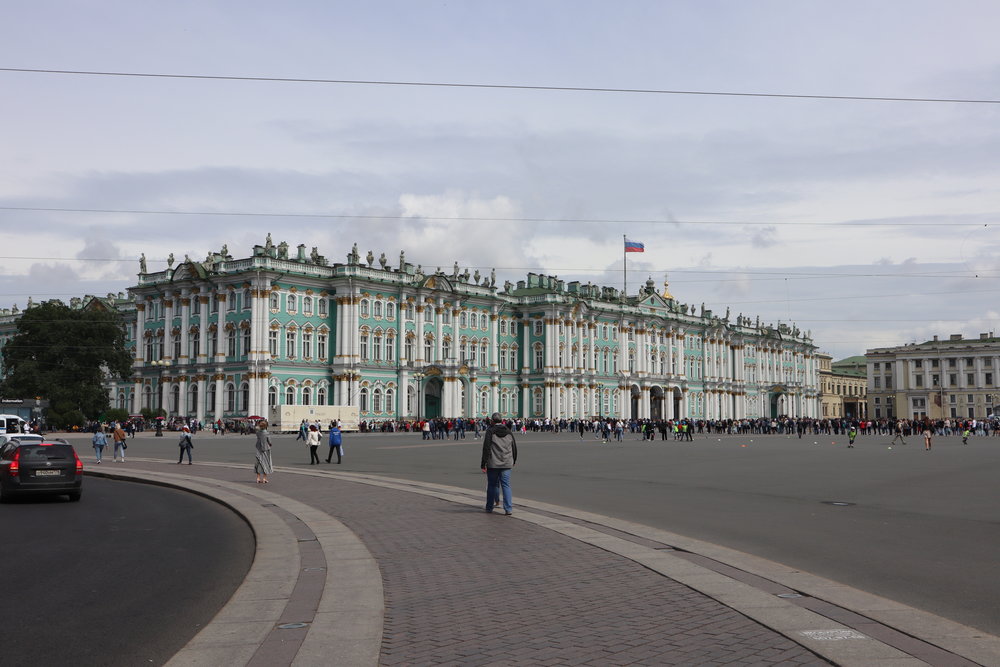
Winter Palace
The average visitor could easily spend a very enjoyable day here either fully absorbing one or two of the exhibitions or making a brisk trip through the entire building, while dedicated museum enthusiasts will no doubt wish to return for a second or third day.
The collections are varied in content – Russian regalia, Egyptian antiquities, Italian and Spanish fine art – but share a common theme of intense splendour. In fact, the museum building itself, its pearl walls emblazoned with gold and white bezels, could well be construed as the most dazzling special exhibit of all.
Don’t make the mistake we did in thinking that the first Thursday of every month, when the Hermitage offers free admission to all, would be a good time to visit. The lines are incredibly long, and the time spent waiting in the queue will easily nullify your savings. Pay the admission fee; you’re certain to get your money’s worth.
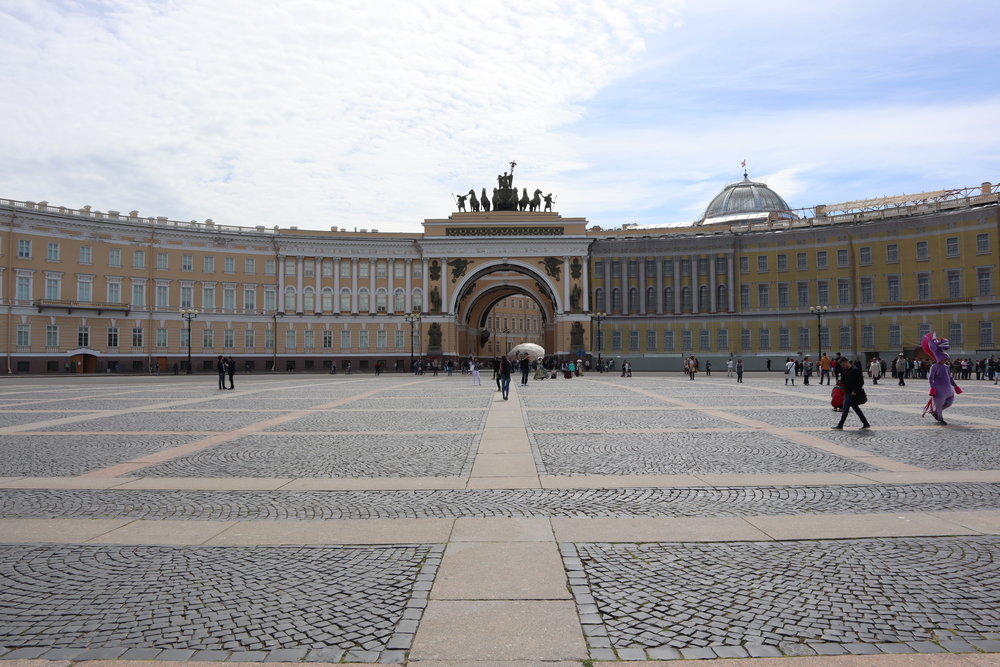
The General Staff building on Palace Square, facing the Hermitage
You’ll also want to hit up the Peterhof Palace and the Peter and Paul Fortress, both of which were originally built on the orders of – you guessed it – Peter the Great. The former has often been described as the “Russian Versailles” and its ostentatious interiors represent a continuation of the Hermitage’s grandeur. The latter was the original citadel of Russia’s then-capital and today serves as a museum dedicated to the history of the city.
Both are located further afield from the city centre; perhaps that’s why I’m kicking myself for not having made it out there on this particular trip, and why a return to St. Petersburg in the near future in order to right these wrongs is definitely on the cards.
Dusk: The Golden Hour
Afternoons in St. Petersburg are perfect for checking out the city’s primary sites of worship, which are notable for their grandiose beauty.
Not far from the Winter Palace is Nevsky Prospekt, the main street through which much of St. Petersburg’s public life moves. Along here you’ll find the imposing Kazan Cathedral, a grand imperial-style place of worship dedicated to Our Lady of Kazan, one of the highest-order icons in the Russian Orthodox Church. You’ll also encounter the Church of the Saviour on Spilled Blood, modelled after St. Basil’s Cathedral in Moscow with its distinctive colourful spires.
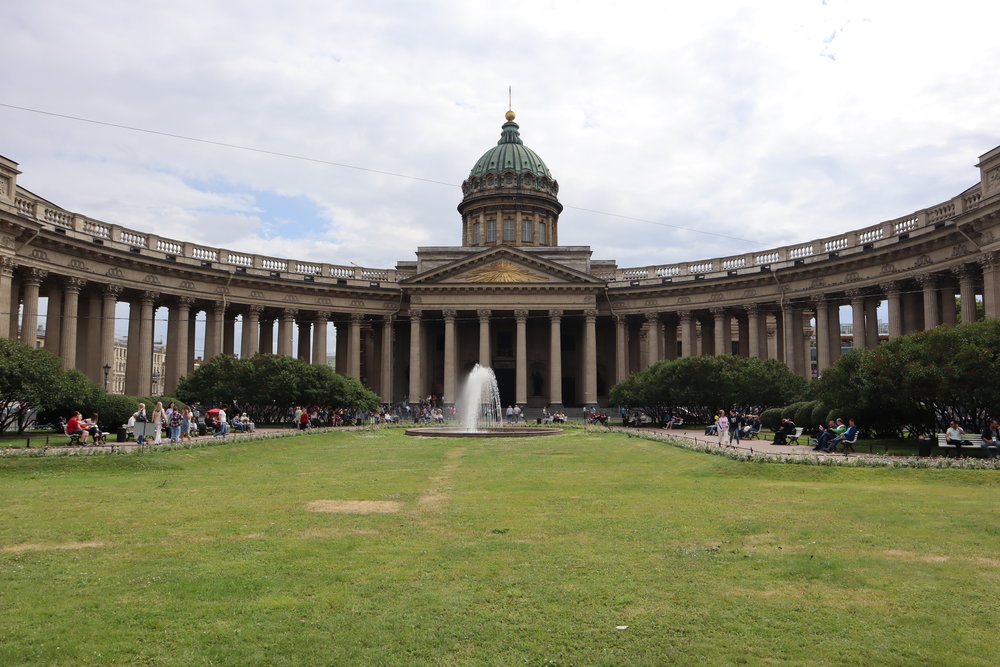
Kazan Cathedral


Both buildings are stunning in their appearance but also blend seamlessly in to the street scene, such is the spectacular architecture that pervades the city in general. Although both are beautiful in their own rights, the distinctively Baroque and neoclassical styles of the buildings here in Russia’s second city contrasts starkly with the Soviet-style skyscrapers down in Moscow.
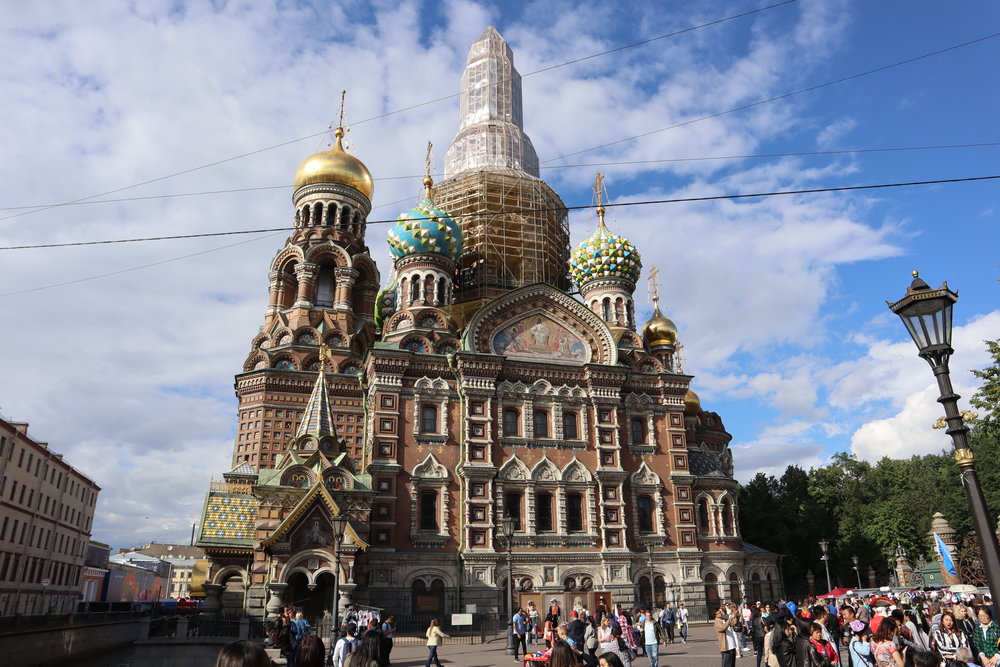
Church of the Saviour on Spilled Blood
Follow Nevsky Prospekt north towards the Neva River and you’ll arrive at the Bronze Horseman statue, a city landmark commissioned by Catherine the Great that depicts her husband riding victoriously. The statue’s pedestal is apparently known as the Thunder Stone and is the largest stone ever moved by humans, so it’s well worth checking out.
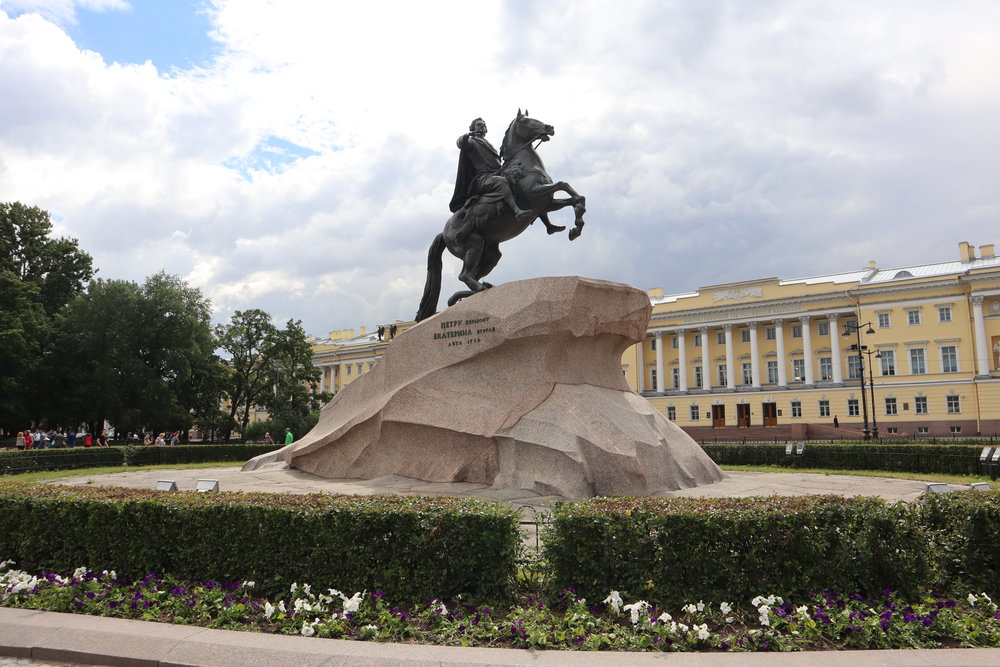
The Bronze Horseman
The backdrop against which the Bronze Horseman is most often depicted is of course St. Isaac’s Cathedral, the last of St. Petersburg’s trio of symbolic religious buildings alongside the Kazan and the Church on Blood. The connection here to Peter the Great lies in the fact that St. Isaac was the patron saint of Peter’s Romanov dynasty, and the fourth largest cathedral in the world is consecrated in his honour.
We gained admission to the observation deck atop St. Isaac’s for the relatively inexpensive price of 250 RUB ($5), from which we enjoyed a commanding 360˚ view of the city.

St. Isaac’s Cathedral viewed from the Alexandrovskiy Garden
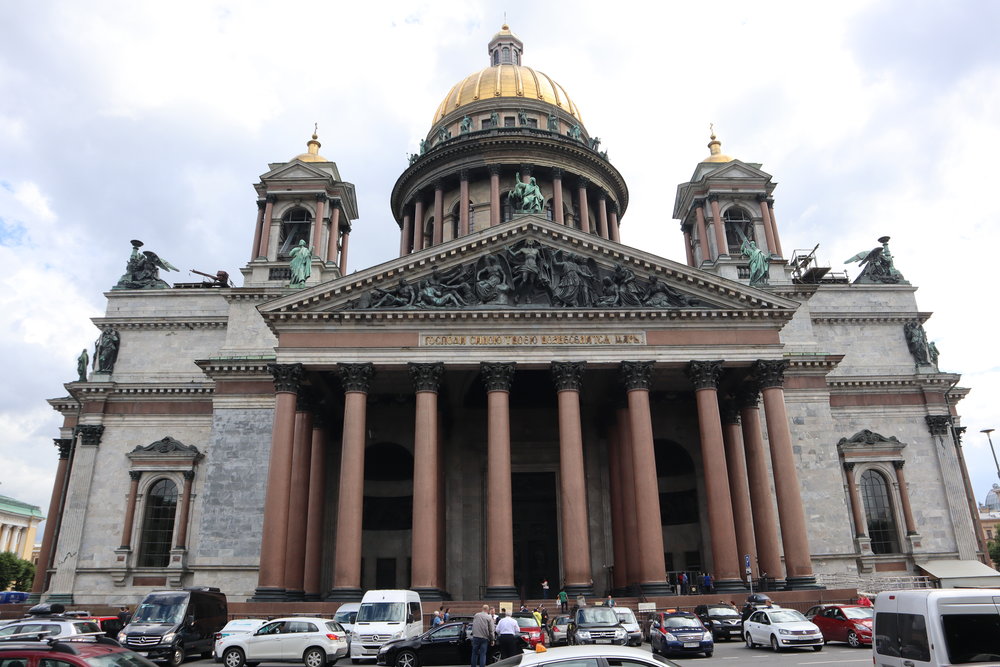
St. Isaac’s Cathedral
Evening: The Bridges
St. Petersburg’s position on the mouth of the Neva River gives it a unique urban geography, which consists of many individual islands each connected by bridges and transected by a series of small canals. The bridges of the Neva have come to symbolize the city to some extent, especially during the night scene – every night during the navigation season between April and November, the bridges rise up into the air to allow ships to pass through.
No visit to Russia’s cultural capital would be complete without a live-action viewing party of the raising of Palace Bridge. It takes place at around 1:10am every night, so leave the bar around 12:45am to take up your spot by the riverbank. You can also check the dedicated bridge-drawing website, which provides live updates on the drawing times for all of St. Petersburg’s bridges every night.
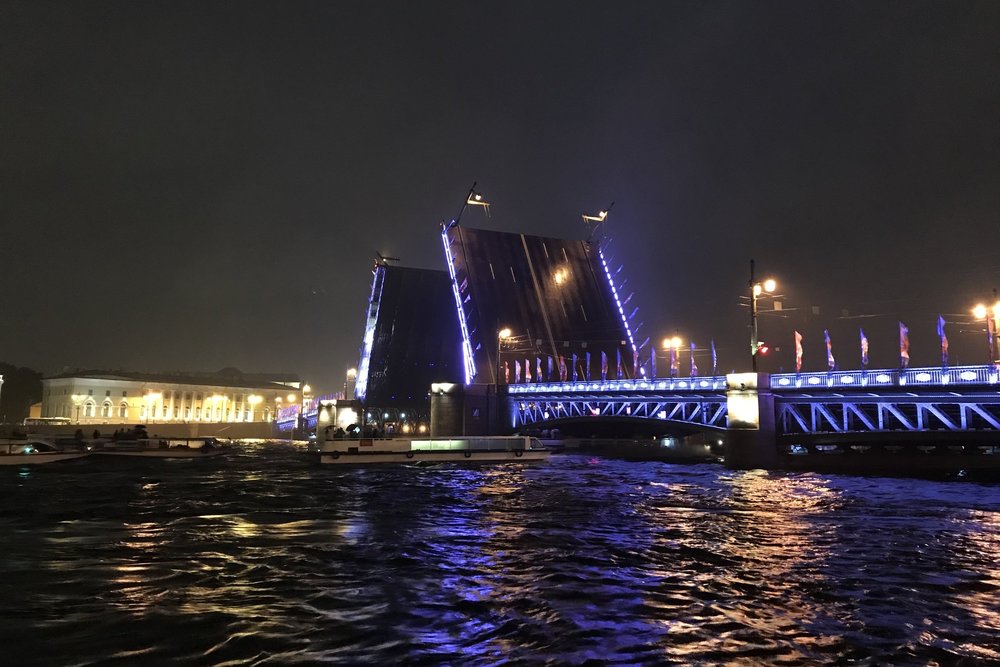
Palace Bridge drawn at night
Palace Bridge, connecting Vasilievsky Island with the mainland, has by far the most recognizable bridge-drawing ceremony, with the centre section splitting in half and rising into the night in perfect harmony. Add a dash of rain and a popped-open umbrella and the whole thing feels even more magical.
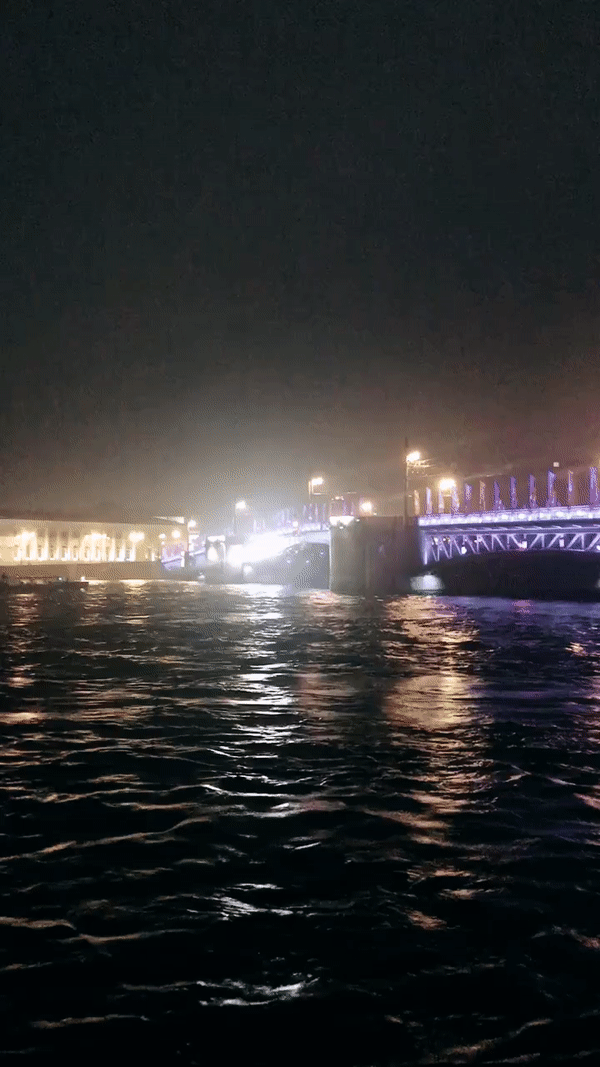
The Trinity Bridge also has a particularly satisfying drawing ceremony, with the entirety of the southernmost span of the bridge standing far above the ground during the small hours of the night.
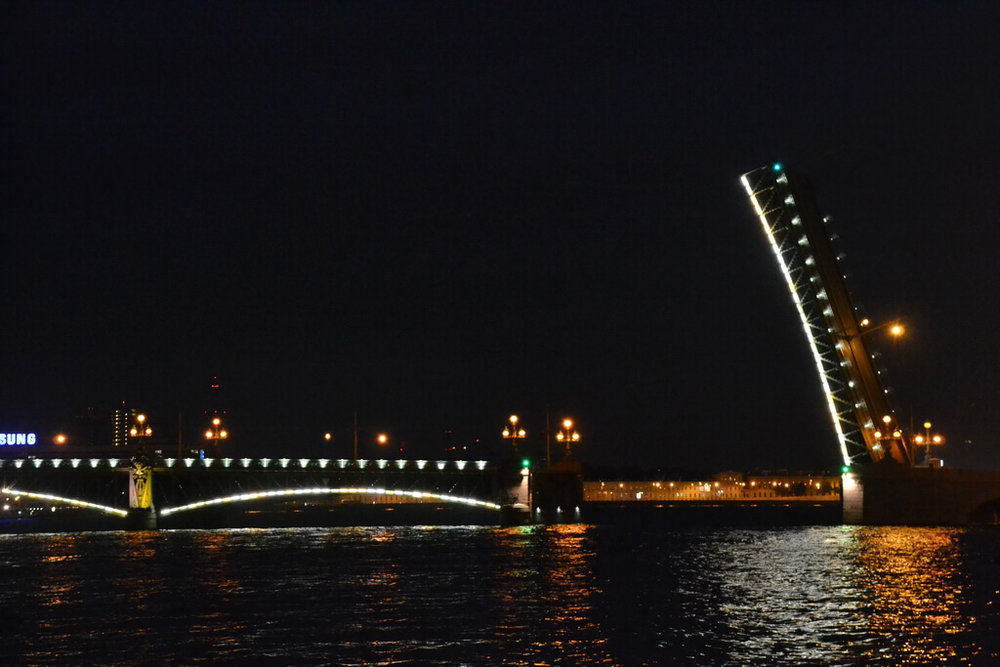
Trinity Bridge drawn at night
Bridges in St. Petersburg are typically drawn between 1am and 4am every night during the navigation season, although there’s a small window of about 15-20 minutes around the 3am mark during which the are lowered to allow people to get home. Without use of the bridges across the Neva, journey times between opposite sides of the river can take twice or thrice as long, and entire parts of the city, such as Vasilievsky Island, can become virtually inaccessible.
Close attention must therefore be paid to the bridge-drawing schedule on any given night out, of which there will be many…
Dawn: The White Nights
This is the northernmost city of over a million in the world, situated at a latitude of 60˚N. During the summer, then, Petersburgers witness a phenomenon known as white nights – when twilight persists throughout the night and the sun barely sets.
There’s just something extra special about a night on which sundown morphs seamlessly into daybreak without so much as a flicker of darkness. Late May and mid-June is the best time to admire the incredible white nights. By the time we made the trip in early July, the first traces of night were already beginning to form around 2am, although a luminescent glow remained on the edges of the horizon.
Naturally, a city blessed with such a captivating natural spectacle has developed a strong nightlife culture that caters to every preference. From dimly-lit dance halls, to dingy underground music establishments, to dozens of unassuming but spectacular cocktail bars (I recommend Imbibe on the Zhukovskogo street; we went there twice over four nights and thoroughly enjoyed their concoctions), there’s no shortage of venues to keep the night young no matter the hour.
Stepping out into a brilliant pearly-bright sky, you feel energized, invigorated – even if your circadian rhythms are killing you on the inside. Sleep will be necessary at some point, but for now it’s a flitting afterthought; the intoxicating broad daylight dictates that what lies immediately ahead – whether that’s the next bar down the road, a trip to the delightful Hesburger for some late-night grub, or a leisurely stroll home along the canals – is all that matters.
Conclusion
There’s many ways to play tourist in a new city, and in a place as unique as St. Petersburg, I thought our laissez-faire approach worked rather well. Just as effortlessly as the nights and days blend into each other during the summertime, so too did dinner, drinks, casual walks, bridge-watching, more drinks, even more drinks, and a last-ditch sightseeing effort to see as much of the important attractions as we could.
St. Petersburg is high on my list of places I’ve visited but am eager to return; next time will hopefully be a longer stay, allowing me to catch up on what I’ve missed but also for a little more of the same.























